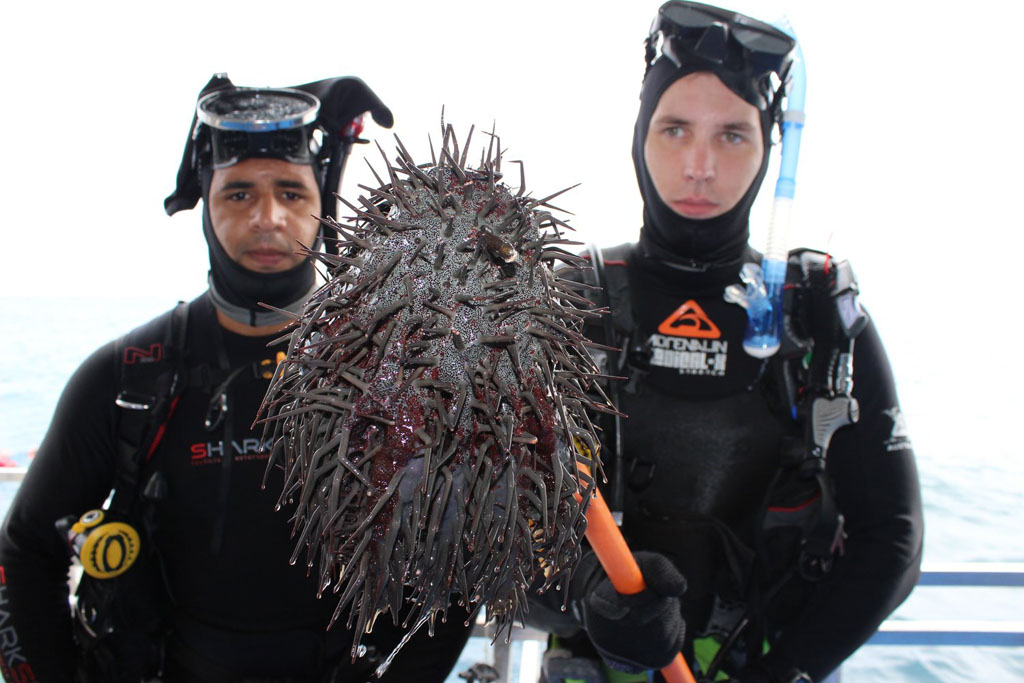Some may have read the recent Great Barrier Reef Obituary which claims that ‘Climate change and ocean acidification have killed off one of the most spectacular features on the planet.’ It’s been shared 1,420,000 times, and not surprisingly, many folks – particularly those overseas that have seen the ghostly white images in media, believe it to be true. [Graphic credit: Andrew Holder]
But of course it’s not true, Diveplanit was diving in the Whitsundays – heart of the Great Barrier Reef only last week and the coral there is in great shape.
So why and how can someone get away with publishing such a barefaced and damaging misrepresentation of the fact?
Well actually, many of the individual facts in the article are true, for example, that a significant percentage of the Reef has be bleached beyond recovery. However, like so many pieces of provocative commentary, while this piece serves a positive purpose – it fails to do either of two positive things:
- Include information on the positive action some organisations are already undertaking; and;
- Give readers positive ideas on what they can do to help.
Technically it’s call a simulated loss review, meaning: ‘if we had wanted to avert this loss – what could we have done prior to it happening?’ Used often in sales, (we lost the deal), healthcare (patient lost a limb or their life), and disaster management (we lost power, we lost comms etc etc).
The author, Rowan Jacobsen, is pointing out all the things that we are not doing, that we could be doing to save the Great Barrier Reef. His words are very similar to those in the Great Barrier Reef Marine Park Authorities 2014 Reef Outlook Report, the executive summary if which states:
“… the greatest risks to the Great Barrier Reef have not changed. Climate change, poor water quality from land-based run-off, impacts from coastal development, and some remaining impacts of fishing remain the major threats to the future vitality of the Great Barrier Reef.”
Who is helping to save the Great barrier Reef
So is anyone actually doing anything that might help save the Reef?
There are a number of positive actions going ahead which are delivering positive impacts every day.
Greening Australia is actively tackling the ‘poor water quality from land-based run-off’ issue by restoring coastal wetlands. You can get involved in supporting them via the Fish Up Your Face for the Reef campaign – it’s simple and fun – and you could even win a trip to the Reef.
Col McKenzie, Executive Director of the Association of Marine Park Tourism Operators (AMPTO), has mobilised a small army to keep the threats from the Crown of Thorns Seastars under control.
Sustainable marine tourism operators like Peter Gash at Lady Elliot Island, and Cruise Whitsundays (to name just two of many), are providing leadership in how to run sustainable marine tourism. [Photo credit: Matt Raimondo]
And who’s not helping?
The most recent Report Card, assesses the reported results of Reef Water Quality Protection Plan actions up to June 2015. Results – mainly Grade D’s – show the need to accelerate the rate of change required to meet the targets.
But no additional Federal funding was on offer to support any additional effort required. Clearly the Australian Federal Government still don’t have this as a priority.
Most recently, on Sunday 9 October 2016, the Queensland Government has stepped up to progress Adani mine project invoking special powers to progress the Carmichael coal and rail project, by declaring it critical infrastructure – the first time this has happened in seven years.
The burning of the coal from this single mine will create 4.7 billion tonnes of climate pollution over the proposed life of the mine, annually equivalent to a small country like New Zealand. (Think about the old “What weighs more, a ton of feathers or a ton of steel?” Well they weigh the same, but you need a lot more feathers to make that ton).
Just think how much carbon dioxide – which weighs about the same as your breath – you need to add up to a tonne, then multiply by 4,700 then multiple that by 1,000 and then multiply that by another 1,000. Only then can you understand the stupidity of not leaving that stuff in the ground. [Photo credit: theGuardian]
So our governments aren’t helping – that pretty much leaves you. Yes – you!
So what can you do to help the Reef? Perhaps you can start by Fishing Up Your Face for the Reef and maybe think about your own carbon footprint – switch your power supply to renewable energy?
If you liked this post, you might also like CoralWatch – so easy to do your own Coral Reef Survey










